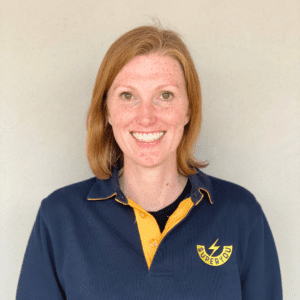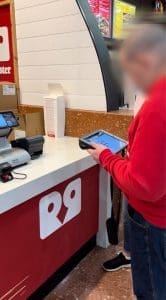📌 Key takeaways
 This post was written by Superyou Principal Assistive Tech Consultant and Speech Pathologist, Tanith Brien, as part of our AAC Awareness Month celebration and to spread awareness about the importance of AAC in the community!
This post was written by Superyou Principal Assistive Tech Consultant and Speech Pathologist, Tanith Brien, as part of our AAC Awareness Month celebration and to spread awareness about the importance of AAC in the community!
At Superyou Therapy, we believe in the importance of communication in all environments. Everyone deserves to have their message heard — at home, at school, and out in the community.
For people who use Augmentative and Alternative Communication (AAC), that means having the right tools and supports to communicate whenever and wherever they have something to say.
Being out and about in the community can provide new communication opportunities, such as communicating with less familiar people or chatting about new and interesting things you see. There can also be practical factors to consider to support effective communication across different environments.
Mindset matters
Supporting AAC use in the community starts with the belief that everyone deserves true communication autonomy.
This means empowering people to say whatever they want to say, to whoever they want to say it to, whenever and wherever they want to say it and however they choose to say it (Porter, 2017).
It’s important to think beyond just helping someone get their basic needs met – real communication involves sharing opinions, telling stories, making jokes, expressing feelings and more. By adopting a mindset that values the right to communicate in all environments, we help create a world that reduces limitations for AAC users.
Plan to keep AAC systems accessible
Having communication systems ready to use at any time often takes a little planning.
Consider questions like:
- Would a shoulder strap make the system easier to carry?
- If the person uses a wheelchair or other mobility aid, would a mount help keep their AAC system readily available?
- Might a portable power bank or charger be needed for longer outings?
We want AAC systems to be ready to use, not left behind or packed away.

Multimodal Communication – Choosing Tools That Fit the Situation
No one communication method works in every situation. That’s why we think of having a toolbox of communication options which may be used in combination to suit different environments and communication partners.
For example:
- If someone has difficulty using their eye gaze system in bright sunlight, having access to their other communication methods, such as a communication book can ensure they are still able to communicate.
- An electronic device may not be safe in the pool or ocean, but key word sign, gestures or laminated communication tools may be appropriate.
- Someone may choose to use different communication tools with different people. For example, using their AAC device with unfamiliar staff at the shops but using more key word sign and gesture with their mates at the park.
- Some AAC users may prefer to use pre-programmed messages for some fast-paced but predictable interactions such as ordering a meal, but create novel messages using single words or typing at a different time.
Supporting and having access to multiple communication methods can build strategic skills for effective communication.
Volume and environmental noise

Noise levels can change dramatically in the community. What’s clear in a quiet room may be hard to hear in a busy cafe or shopping centre.
You may want to think about:
- Practicing adjusting the volume for different environments.
- Consider if further amplification such as a speaker case or external Bluetooth speaker would allow the message to be heard in more environments.
- If a message isn’t heard, can the AAC user turn their device so the partner can read the message window?
- Non-electronic communication methods that don’t rely on voice output being heard might be chosen in some situations.
Supporting communication access with unfamiliar partners
 Many people in the community may not know how to communicate with someone who uses AAC.
Many people in the community may not know how to communicate with someone who uses AAC.
We’ve found small advocacy tools and strategies can help create awareness, patience and greater inclusion.
- Communication Access Cards or badges can explain how someone communicates and any helpful strategies e.g. giving them more time, offering choices.
- Pre-programmed messages like “I use a communication device to talk — please give me time” can help set the tone for positive interactions.
- When visiting businesses or community venues with groups of AAC users, we’ve found it helpful to give staff a short info sheet beforehand. It touches on how to provide good customer service to people with diverse communication needs – for example, what to expect and simple ways to offer support.
- When possible, we would encourage venues to consider broader communication access training to build greater awareness and inclusion. Resources and accreditation information are available through Scope Australia’s Communication Access Program.
Together these small actions help create a community where everyone feels understood, respected and included – no matter how they communicate.
The Big Picture
Everyone deserves to share their ideas, thoughts and opinions – wherever they are.
When we plan for ready access, portability, volume, and partner understanding, we help make communication possible in every part of life.


